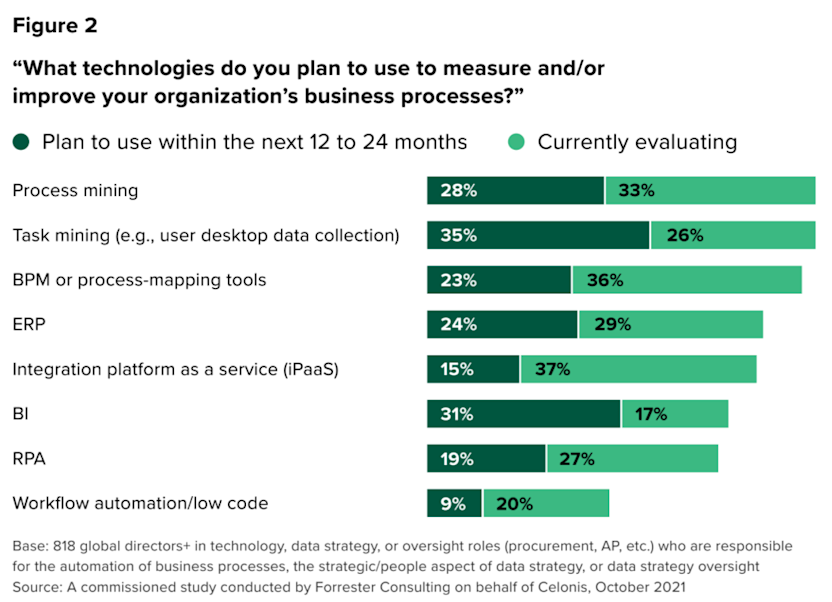
Process mining hits inflection point in 2022 as decision makers eye better execution
Process mining is going to become a key part of enterprise digital transformation efforts in 2022 as companies aim to streamline the processes for everything from enterprise resource planning, supply chain, IT and financial functions.
According to a Forrester survey commissioned by Celonis, 61% of decision makers will use or evaluate process mining to simplify operations. The inflection point for process mining is here for a few reasons. Consider:
Supply chain management has become a boardroom issue amid COVID-19 pandemic disruptions and supply and demand imbalances. Enterprises are looking to build in resiliency as well as efficiency.
Inflation is forcing companies to look for cost savings and efficiencies wherever possible to keep pricing in check for customers while preserving margins.
Cost efficiencies realized are reinvested into digital transformation efforts.
Sustainability is another boardroom issue that is bringing process mining to the forefront. Any business process that is more efficient adds to sustainability efforts.
While the Forrester survey, which covered 800 decision-makers at global companies, highlights process mining's emerging popularity executives have been noting the momentum too. Colfax, Deutsche Bank and Siemens have all outlined process mining initiatives on their recent earnings conference calls. These initiatives often revolve around surfacing and realizing cost efficiencies to improve financial performance.

TD SYNNEX CEO Richard Hume said process transformation is an ongoing effort. “We live on a bit of a thinner margin profile, but it always requires more and more productivity, which lends well to automation and process redesign,” he said.
For instance, Allianz’s recent Capital Markets Day focused heavily on harmonizing processes as part of becoming a digital-first company. Oliver Bäte, CEO of Allianz, said the company's goal is to be "digital by default, not digital on the margin." Barbara Karuth-Zelle, Chief Operating Officer of Allianz, said:
We want to create one Allianz global customer model. That means we start with the products to be global, to be harmonized, then also go into the processes that actually come together with the product. And if we have the global product and the global processes harmonized, we can also massively simplify the underlying technology. We call that, in all itself, the Business Master Platform that contains not only the processes and the product, but also the IT.
Wil van der Aalst, Chief Scientist at Celonis, said process mining is helping companies gain visibility into how they execute, and course correct. He said:
Existing technologies help with digital transformation, but they don’t provide an approach that’s been missing – the ability to see what’s going on. Leaders that don’t know how their businesses run, miss out on competitive opportunities to reduce costs, improve efficiency, productivity and customer experience.
Indeed, the Forrester survey found that only 56% of decision-makers feel they're able to incorporate systems and processes to create an end-to-end view of processes.
Professor van der Aalst said in a recent process mining lecture that process mining is the bridge between data science and process science. The two categories together encompass many of the technologies used for execution management. Your next steps:
Get educated on process mining with van der Aalst's course.
Leverage process mining best practices, e-books and courses at Celonis Academy.
Identify processes to track and baseline before assessing which to improve or automate.
Consider task mining as a technology to use with process mining.
Look for process mining use cases that span multiple systems since returns tend to be larger there.



